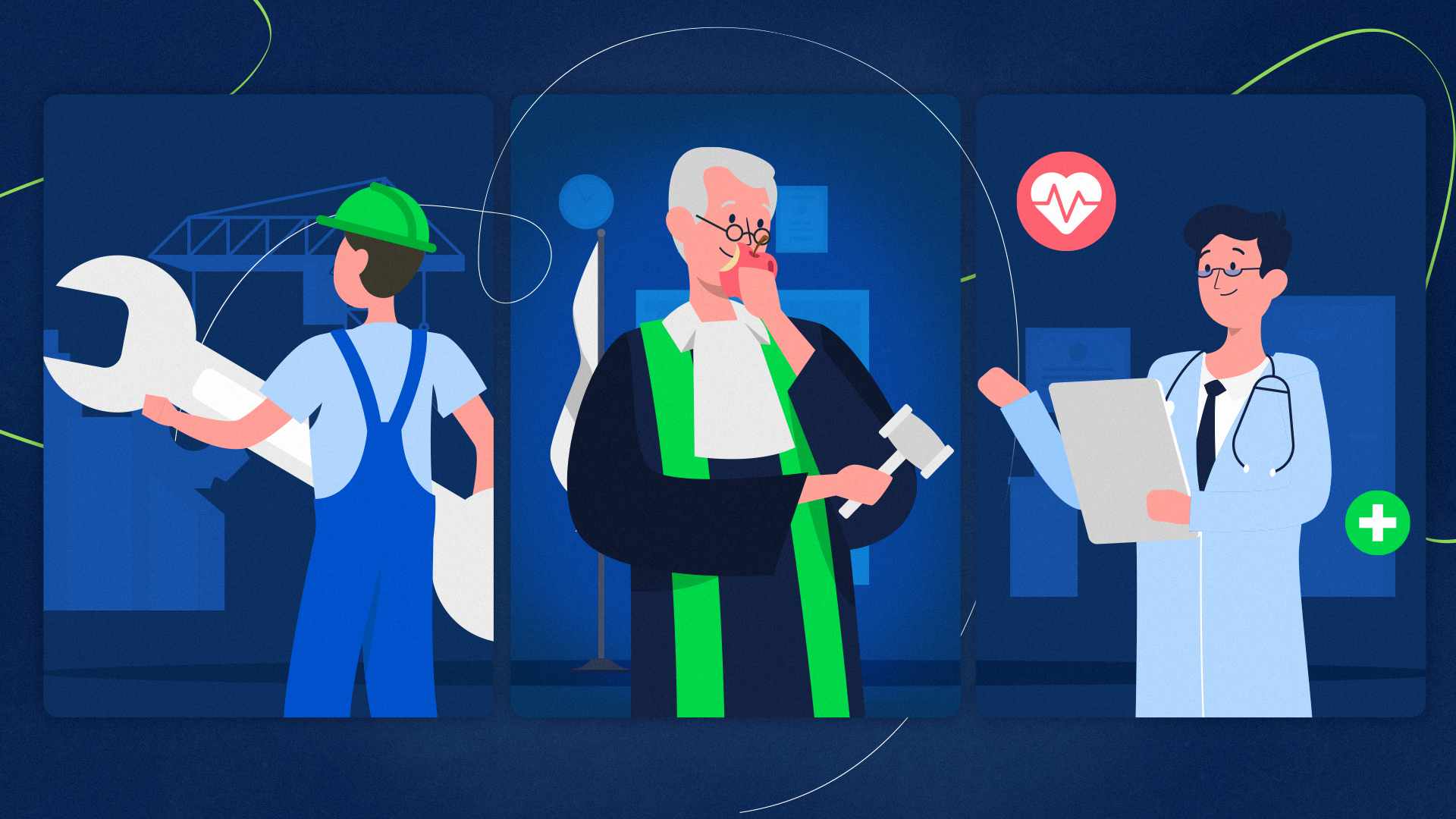Google’s Quality Guidelines is a 167-page document that informs Search Quality Raters on how to assess the quality of websites, web pages, or search results.
Though the guidelines are written for Search Quality Raters, SEOs and webmasters can use them to improve their website or page, adhere to quality standards, and boost their search visibility.
Browse through this article to save the time you would spend reading the document. I have condensed all the necessary information to help you judge the quality of your website or web page. The following information reflects the 2022 Google Quality Rater Guidelines update.
This article will focus on what can help you as an SEO, copywriter, or webmaster. Let’s get started.
What is a Search Quality Rater?
Google works with external Search Quality Raters. Raters use the Search Quality Rater Guidelines to determine how well a website responds to the search intent of Google users based on a number of factors.
The overview of the Quality Rater Guidelines highlights that there are 14,000 raters across the world. They all represent their local area and the cultural standards that go with it. Though the cultural norms for each locality are upheld, raters follow the same guidelines to assign ratings to web pages.
What are Search Quality ratings?
There are two types of ratings mentioned in the guideline: a Needs Met rating and a Page Quality rating.
These ratings collected from Search Quality Raters are used to determine if Google shows quality search results. This information is useful to Google after the ranking algorithm is tweaked – Google wants to know that the changes benefit users.
Though pages are applied a rating, no single rating impacts an individual page or site’s ranking. Ratings are used to improve search results.
The ratings also provide additional data to improve algorithms:
How can Google’s Quality Rater Guidelines help you?
The Quality Rater Guidelines are a helpful resource for anyone who owns or maintains a website.
In understanding the guidelines, you’ll get an idea of the criteria Google uses to determine quality web pages. The guidelines’ criteria are used to differentiate between the highest and lowest quality pages. They are also used to determine whether the results on a search page are useful for the user.
By digesting the criteria for quality, you can adhere to Google’s standards and potentially improve your position on the search engine results page. If you want the chance to compete with the highest quality results, then understanding the Quality Guidelines is a must.
Let’s look at the structure of the Search Quality Guidelines and then go through it.
The structure of the Search Quality Guidelines
The Google Search Guidelines are publicly available and valuable for anyone with a website. The structure is as follows:
- The first section focuses on rating Page Quality. It is the most important section if you want to improve your website quality.
- The second section is a run-down on search user needs.
- The third section, Needs Met, is about whether a Google search result matches the user’s intent.
How Quality Raters determine quality web pages
Quality Raters consider six elements to judge the quality of a web page:
- The purpose of a web page
- Web page content
- Is the page Your Money or Your Life (YMYL)?
- Does the page have E-A-T?
- What information about the website is included?
- Reputation research
These elements are analyzed and result in a Page Quality rating. Let’s look at these elements in more detail.
1. Purpose of the page
Search Quality Raters first look at why a page was created. Once the reason is determined, raters consider whether the page has a beneficial purpose. A page is considered beneficial if it is created to be helpful for people.
Your page can be considered beneficial, whether you have a page selling fashion items or one with comedic cartoons. It isn’t about the type of page. A page will be considered quality when it matches its purpose. For example, the purpose matches the page type if you own a news website informing users about the latest events.
Raters assess the purpose of a page and determine whether it is beneficial so that they can decide which other relevant elements they need to factor in afterward to judge the web page. For instance, if a page’s purpose is to give financial advice, it would be considered a Your Money or Your Life (YMYL) page and will be rated with that element in mind.
Here are some common helpful page purposes:
- Sharing information, media, or software
- Expressing or allowing others to express opinions and points of view
- Selling products or services
- Entertainment
2. Web page content
Different content on a page serves distinct purposes. Before judging the entirety of the page, the rater needs to fit the page’s information into three categories: the Main Content (MC), Supplementary Content (SC), and Advertisements (Ads).
Let’s take a look at the page content categories.
Main content
The Main Content (MC) of a page is any part that helps the page achieve its purpose. This content contributes the most to rating scores. The main content of a page may look dissimilar on pages with different purposes.
Try to discern what parts of your page are the MC as it significantly impacts the Page Quality rating of a web page.
Supplementary content
Supplementary Content (SC) helps to improve the user experience. It can assist or diminish the page’s purpose and potentially increase or decrease positive user experience.
SC is seen as anything that is not advertisements or main content. It can include internal links to articles, media handles, and comment sections. If your SC notably distracts from your main content, it can negatively impact your Page Quality rating.
Advertisements
The last component of a web page’s content is Advertisements (ads). Ads are considered as anything that is sponsored.
Sponsorships are a great way to make money and maintain a quality website. They also may support the main content and supplementary content in creating a good user experience. If your site contains sponsored content, your website is responsible for its quality, whether you made it or not.
The presence of ads does not contribute to the page’s quality score, as it is well known that some pages may not be able to operate without ads. But, ads should be clearly marked and separate from other content. They should not be distracting or difficult to close if they appear as popups. If this is not taken into account, this could affect your page rating.
3. Your Money or Your Life (YMYL) pages
If the content on your page can impact someone’s health, financial stability, safety, or society’s welfare or well-being, then it is considered a YMYL topic.
Any page with YMYL information is scrutinized significantly, as these pages can affect people’s lives negatively. The more likely the page can negatively affect someone on any of the above topics, the more scrutiny the page will receive.
If you’d like to delve deeper into the topic of Your Money, Your Life, take a look at this article that goes into detail about pages with YMYL topics and how to align your YMYL content with Google’s quality standards.
4. The E-A-T rating
One of the main principles for judging whether a page has quality or not is its E-A-T. E-A-T or EAT stands for expertise, authoritativeness, and trustworthiness. You need to factor this concept into your pages. E-A-T is essential with Your Money or Your Life pages.
Although there is no EAT score, to judge whether your site has E-A-T, you should consider:
- How much expertise does the main content creator have on the subject matter?
- How authoritative is the main content creator, the main content, and the website?
- How trustworthy is the main content creator, the main content, and the website?
For your site to be considered quality, content should be written by those who deeply understand the topic. The expertise of all contributing authors needs to be validated, and the page or website should be a reliable source of information.
Look at this further, including an in-depth breakdown of all three points in this article about expertise, authoritativeness, and trustworthiness, or contact us for our E-A-T SEO services.
5. Important website information
Google Quality Raters will look for who provided the content on the web page. Try to answer the following questions on your website:
- Who is responsible for the website?
- Who created the content on the page?
- Who provides the quotes?
- Does the website have any contact information (if applicable), e.g., About, Contact, and Customer Service pages?
It’s important that users can find out who owns and maintains the website. Even if an individual contributes to creating and maintaining content on a business or organization’s page, the business or organization is considered responsible for the content and website maintenance.
This information is crucial for websites containing YMYL content. If you have a site with YMYL content, include as much information as required. For example, if you have a website that sells products, make sure to include a Customer Service section and provide all other necessary details.
If your page is not YMYL and your website has a valid reason for anonymity, then Quality Raters will account for this. For example, a website that allows the author to have a username. With some non-YMYL web pages, an email may be considered sufficient contact information.
6. Reputation research
To determine reputation, Quality Raters look at the website itself and how the website or page is viewed externally. If the creator of the main content is not the same as the website creator, raters will also research the website creator’s reputation. Also, if raters are looking at a company website, companies as a whole will be considered.
Here are some sources that Quality Raters may consider:
- User reviews,
- References
- Expert recommendations
- News articles
- Awards or accolades
Quality raters use information appropriate to the website they are rating. For example, if the website contains YMYL material, the reputation of the content or creator needs to come from experts in the associated YMYL topic.
Experts include people with what the Google Quality Guidelines refer to as having “everyday expertise” – those with real-life experiences with the topic. For example, a patient’s account of their disease.
Customer reviews are helpful, particularly when assessing the reputation of a store. However, positive and negative reviews are reviewed skeptically. You shouldn’t need to worry if you have a few negative reviews.
Likewise, if you have a small organization with little to no reviews, its lack of reputation is not a factor in its page quality score. However, convincing fraud or financial malpractice reports from a credible source is evidence of a very negative reputation.
Note: Do not remove negative comments or reviews about your business on your website. Also, do not incentivize positive reviews through discount offers or writing fake reviews. These are bad practices and could result in being penalized.
Page Quality rating
Page Quality is rated on a sliding scale with nine ratings ranging from Lowest to Highest. There is also a N/A rating for pages that cannot be rated.
The main factors considered that influence your Page Quality rating include:
- The purpose of your page and how well the page achieves it
- The quality and amount of main content
- Whether your page is YMYL or not
- Whether your page has E-A-T
- Who is the author of the main content, and is this information accessible?
- The website’s reputation
What are Search User Needs?
The next section of the Quality Rater Guidelines focuses on the needs of people using Google Search. In particular, understanding the user’s intent when they search a query on Google.
Raters take time to understand the query searched and what the user is looking for when searching the query. It’s not always possible to determine intent, especially on queries that could be interpreted in multiple ways. In this case, Quality Raters use their judgment to determine the most likely intent.
For example, it is clear what the user’s intent is if they search “what is the shoe size of Usain Bolt? But, if “Mars” is searched, multiple potential meanings exist. The person could be looking for the chocolate bar, the Roman god, the planet, or something else. In this case, the user’s intent will be determined by the most typical answer in the Quality Rater’s locale.
Though this section mainly helps to inform Quality Raters, it will be useful for anyone maintaining or creating a website or web page to understand the user’s search needs and intent. Here are some questions to think about:
- Why are they coming to your website?
- What will they gain by accessing your web page?
- What query might they search to get to your website?
These questions can help you to tailor your content and provide the best experience possible for anyone who accesses your web page.
Search user needs are closely tied into the third section regarding Needs Met.
Needs Met rating
Needs Met is the next section in the Quality Guidelines. It is another rating task that Quality Raters undertake. The Needs Met rating process considers the quality and relevance of results on the Search Engine Results Page (SERP) in relation to a search query.
A SERP result can receive Not Applicable (N/A), Fails to Meet (FailsM), Slightly Meets (SM), Moderately Meets (MM), Highly Meets (HM), or Fully Meets (FullyM).
Search Quality Raters first consider the user intent based on their query. They can then decide whether the results are relevant to the user’s intent. The most important factors that would influence a Needs Met rating include:
- Does the result come from an authoritative source?
- Do the results answer the search inquiry?
- Has the result fully answered what the user is looking for?
- Is the answer up-to-date?
- Is the user satisfied with the result?
Fails to Meet results vs. Fully Meets results
Google aims to push content that fits the query.
An answer that Fully Meets (FullyM) a query is one where a large majority of users are completely and instantly satisfied by the search result.
On the contrary, a Fails to Meet (FailsM) result fails in answering the user’s question, and they would need to search further to find what they are looking for. Any ratings between FailsM and FullyM are rated based on their quality and relevance to the user’s inquiry.
If “Onely” was searched to get to the Onely homepage, and the first result was the Onely homepage, the rating would be FullyM. If “Amazon” was typed to get to the Amazon homepage and the top results were about the Amazon rainforest, then the rating would be on the lower end of the Needs Met scale, potentially receiving the lowest score: FailsM.
When the user intent cannot be easily identified, the highest rating cannot be applied. This is because multiple query intentions are a possibility. If the result does not fit the intention of some users, it cannot fully satisfy and answer the majority of searches. Therefore, a FullyM result cannot be given.
Take the previous example I used about Amazon. Some users may type “Amazon” with the intent to find out information about the Amazon rainforest. Others may be looking for the company Amazon. In this case, a Fully Meets rating cannot be applied.
If you receive a FailsM rating, it does not mean the site will be less visible overall, just less visible in an unrelated search. You are more likely to get a high Needs Met rating for searches you are trying to answer. Try to think about why a user might use your website and what they might search to get to it. Tailor your content to the user and try to answer what they are looking for. This is how you will receive a higher Needs Met rating.
A note on adult content, foreign, broken, and offensive sites
When needed, raters will assign flags to pages or websites. The flags are:
- Porn
- Foreign Language
- Did Not Load
- Upsetting-Offensive
- Not-for-Everyone
These flags are applied based on the result and not the query. The relevant flag is used if the results on the search engine results page (SERP) are any of the above. You are not automatically penalized if your web page has a flag applied.
Google wants to ensure that people find the results they intend to see. It would be a bad user experience for someone to find a website with upsetting or pornographic content when they were not looking for it. Therefore, these flags indicate that a page contains any of the above contents. When the flag is applied, the content will appear when users specifically search for it.
The only flag that is slightly different is the Did Not Load flag. This flag is used for pages that have technical problems which hinder the ability to view content on a landing page. In this case, depending on the severity of the technical issues, the Did Not Load flag will be applied, the page will receive a low Needs Met rating, and the page may also get a N/A Page Quality rating.
If you have pages with any flagged content, except the Did Not Load flag, you do not need to worry about your content receiving a Fails to Meet rating in unrelated searches. You likely want your users to be actively seeking this content.
Page Quality and Needs Met – what’s the correlation?
Are you wondering what the relationship between Page Quality and Needs Met rating is?
Quality Raters use the Needs Met rating when looking at the query and the result. Raters decipher what the user’s intent is from their query. Knowing the user’s intent helps raters to judge whether the result fits the query.
A Page Quality rating does not reflect the query. It is only about the result. The consideration here is about the quality of the website or web page based on its purpose. Quality Raters then decide whether the content is helpful and a reliable source of information.
Both ratings are separate from each other. You could get a poor Needs Met rating and a high Page Quality rating. However, if you receive a poor Page Quality rating, you would be less likely to receive a high Needs Met rating.
Google’s helpful content update
The “helpful content update” was published on the 18th of August 2022 to get more helpful and original content to appear in search results. This update aims to get SEOs, webmasters, and copywriters to produce content for people rather than search engines.
All the points in the “helpful content update” reflect the Quality Rater Guidelines. Think about these points when adding content to your website.
- Do you have an audience that would find this content helpful?
- Is your content knowledgeable and from expert sources?
- Is your content reflecting your site’s purpose?
- Will users feel they have learned enough from your content to fulfill their search query intent?
- Are you up-to-date with Google’s latest core updates and Google’s guide for product reviews?
Make sure to answer the above questions. Avoid creating your content for search engines first. Focus on creating satisfying content and using SEO best practices to create the ultimate user experience.
Summing up
This is a long article that sums up a lengthy document. Here are the takeaways from the Quality Rater Guidelines.
- Match your content to the purpose of your web page or website
- Create original, high-quality main content
- Carefully consider monetization opportunities – ensure the ads displayed on your site are not harmful.
- Include information about the website’s creator, the creator of the main content, and contact information
- Provide the best service to customers to get positive reviews. Do not write fake reviews or incentivize customers for reviews.
- Make sure that your content writers are experts in their field.
- Keep your users in mind.
Do you want to find out the main differences between the 2022 Search Quality Guidelines and Google’s 2021 Quality Guidelines? Have a look at Dr. Marie Haynes’ tweets about the recent update.
Quality Rater Guidelines change log
The Quality Rater Guidelines change over time. This article will be updated as Google Search evolves to reflect the changes.
You can learn more about Google’s intent while ranking websites by comparing the updates with the previous versions. Stay up-to-date with the most recent changes and reflect those changes in your content. The table from Google presenting the summary of changes from the past two years is right at the end of the Rater Guidelines. Take a look at the changes here:
| Date Published | Summary of Changes |
| July 2022 |
|
| October 2021 |
|
| October 2020 |
|
Google’s Quality Rater Guidelines – FAQ
What are Google’s Quality Rater Guidelines?
Google’s Quality Rater Guidelines provide instructions for third-party contractors, known as Quality Raters, on how to evaluate the quality and relevance of web pages in Google’s search results. The guidelines help Google understand how well its algorithms are performing. 1
What is the purpose of the Page Quality rating?
The Page Quality (PQ) rating process determines how well a webpage achieves its purpose based on factors like the quality and credibility of the main content, the website’s reputation, and the expertise of the content creators. 1
How do Quality Raters evaluate search results?
Quality Raters assess search results based on two main criteria: Page Quality (PQ) and Needs Met (NM) ratings. PQ looks at the webpage’s quality, while NM evaluates how well the result meets the user’s search intent behind the query. 45
What is the Needs Met rating based on?
The Needs Met rating is based on both the query and the result. Raters determine the likely user intent behind a search query and then evaluate whether the result satisfies that intent. 2
Can a high Page Quality rating lead to a high Needs Met rating?
Not necessarily. A page can have a high Page Quality rating but still receive a low Needs Met rating if it is not directly relevant or helpful for the specific query, even if the content itself is high-quality. 2
What are YMYL pages and why are they important?
YMYL stands for “Your Money or Your Life” pages that could potentially impact a person’s health, happiness, safety, or financial stability. Google aims to rank only the highest quality pages for YMYL queries. 114
How does website reputation factor into ratings?
Website reputation, based on credible third-party sources mentioning the site or content creator, is an important part of Page Quality rating. A very positive or very negative reputation can justify the highest or lowest rating. 614
Why are raters instructed to check for ads and supplementary content?
Raters check for distracting ads or supplementary content that may interfere with the main content achieving its purpose. Too many disruptive ads can lead to a lower Page Quality rating.

Hi! I’m Bartosz, founder and Head of Innovation @ Onely. Thank you for trusting us with your valuable time and I hope that you found the answers to your questions in this blogpost.
In case you are still wondering how to exactly move forward with your organic growth – check out our services page and schedule a free discovery call where we will do all the heavylifting for you.
Hope to talk to you soon!







